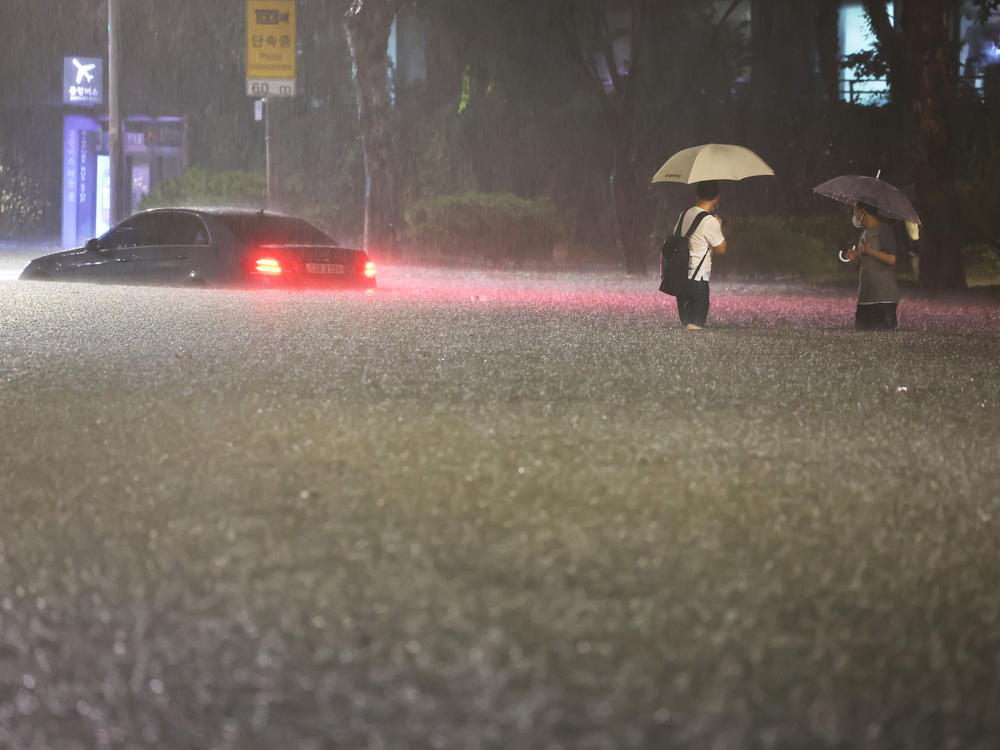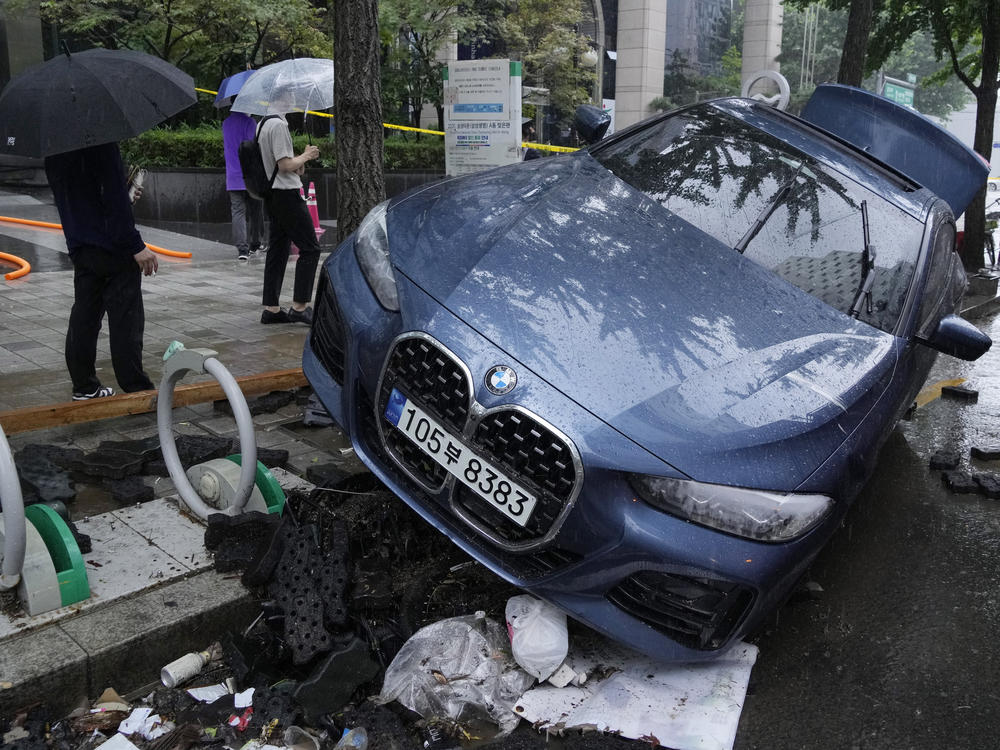Section Branding
Header Content
Historic rainfall turns Seoul's roads into rivers and leaves 8 dead
Primary Content
SEOUL, South Korea — Some of the heaviest rain in decades swamped South Korea's capital region, turning Seoul's streets into car-clogged rivers and sending floods cascading into subway stations. At least eight people were killed — some by drowning in their homes — and seven others were missing, while more rain was forecast.
Deserted cars and buses were scattered across streets as the water receded on Tuesday as workers cleared uprooted trees, mud and debris with excavators and blocked off broken roads and pavement. Landslide warnings were issued in nearly 50 cities and towns, while 160 hiking paths in Seoul and mountainous Gangwon province were closed.
"The heavy rainfall is expected to continue for days ... we need to maintain our sense of alert and respond with all-out effort," President Yoon Suk Yeol said at the government's emergency headquarters. He directed officials' attention to areas vulnerable to landslides or flooding and to reducing the dangers of roads and facilities already damaged to prevent more deaths.
Most of Seoul's subway services were back to normal operations, but dozens of roads were closed due to safety concerns. The military was prepared to deploy troops to help with recovery efforts if requested by cities or regional governments, Defense Ministry spokesperson Moon Hong-sik said.
The rain began Monday morning and intensified through the evening.
By nightfall, people were wading through thigh-high waters in streets in Gangnam, one of Seoul's most bustling business and leisure districts, where cars and buses were stuck in mud-brown waters. Commuters evacuated as water cascaded down the stairs of the Isu subway station like a waterfall. In the nearby city of Seongnam, a rain-weakened hillside collapsed into a university soccer field.
Rescue workers failed to reach three people – two sisters in their 40s and a 13-year-old girl – who called for help before drowning in a basement home in the Gwanak district of southern Seoul Monday night. Another woman drowned at her home in the nearby Dongjak district, where a public worker died while clearing up fallen trees, likely from electrocution. Choi Seon-yeong, an official from the Dongjak district ward office, said it wasn't immediately clear whether the water was electrified because of a damaged power source or equipment the man was using.
Three people were found dead in the debris of landslides and a collapsed bus station in the nearby cities of Gwangju and Hwaseong.
Four people went missing in southern Seoul's Seocho district, which is also home to the private residence of Yoon, who, according to his office, spent hours on the phone receiving briefings and issuing instructions overnight as the rain flooded some of the streets near his high-rise apartment complex.
Nearly 800 buildings in Seoul and nearby cities were damaged while at least 790 people were forced to evacuate from their homes, the Ministry of the Interior and Safety said.
The country's weather agency maintained a heavy rain warning for the Seoul metropolitan area and nearby regions on Tuesday and said the precipitation may reach 5 to 10 centimeters an hour (2 to 4 inches) in some areas. It said around 10 to 35 centimeters (4 to 14 inches) of more rain was expected across the capital region through Thursday.
More than 43 centimeters (17 inches) of rain were measured in Seoul's hardest-hit Dongjak district from Monday to noon Tuesday. The per-hour precipitation in that area exceeded 14 centimeters (5.5 inches) at one point Monday night, which was the highest hourly downpour measured in Seoul since 1942.
Rainstorms also pounded North Korea, where authorities issued heavy rain warnings for the southern and western parts of the country. The North's official Rodong Sinmun newspaper described the rain as potentially "disastrous" and called for measures to protect farmland and prevent flooding on the Taedong river, which flows through the capital, Pyongyang.
Copyright 2022 NPR. To see more, visit https://www.npr.org.


